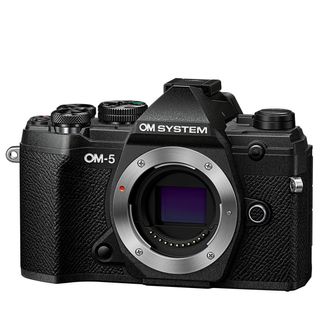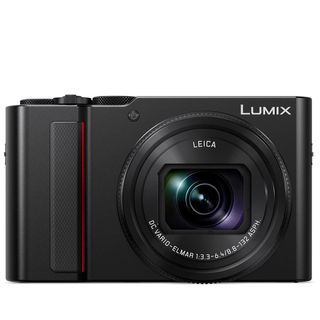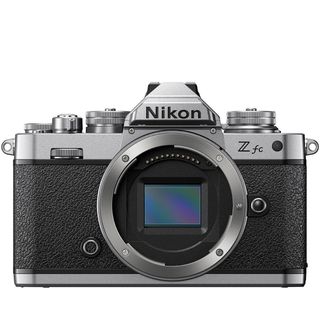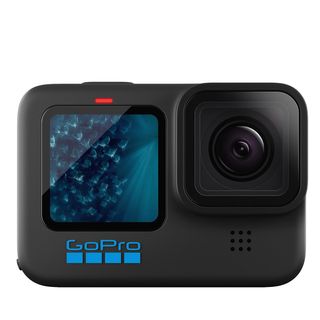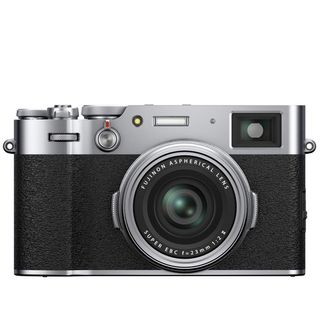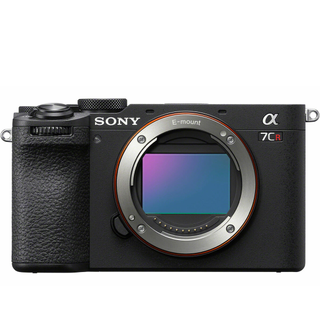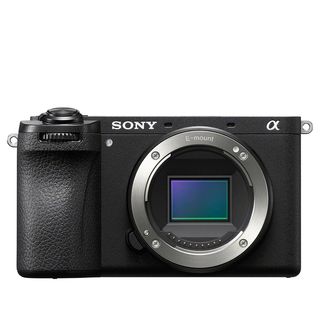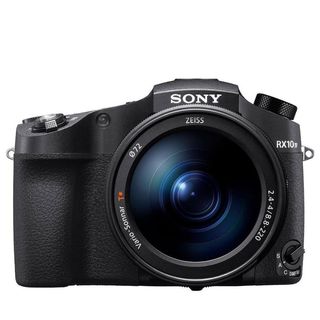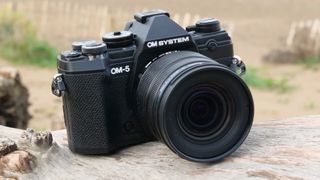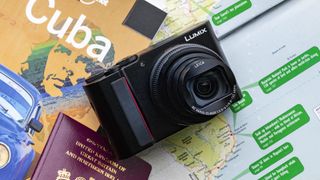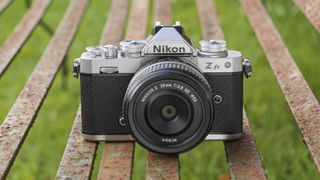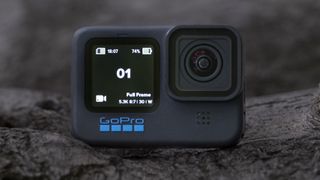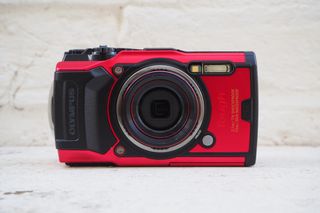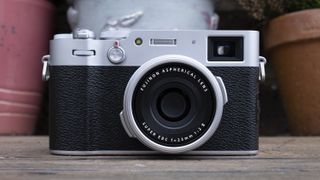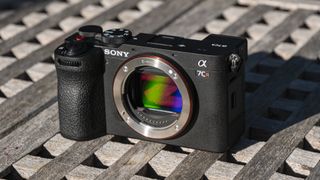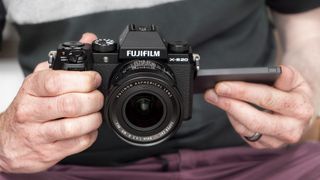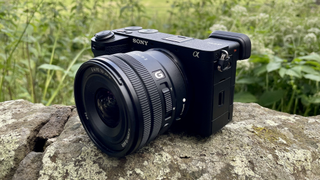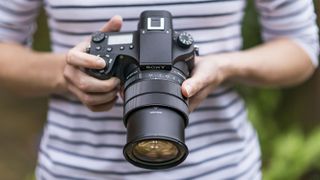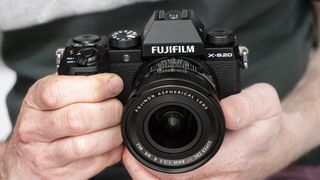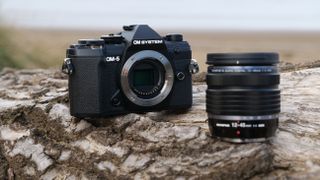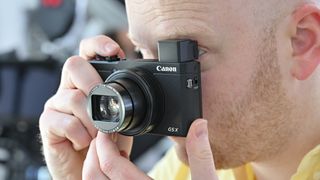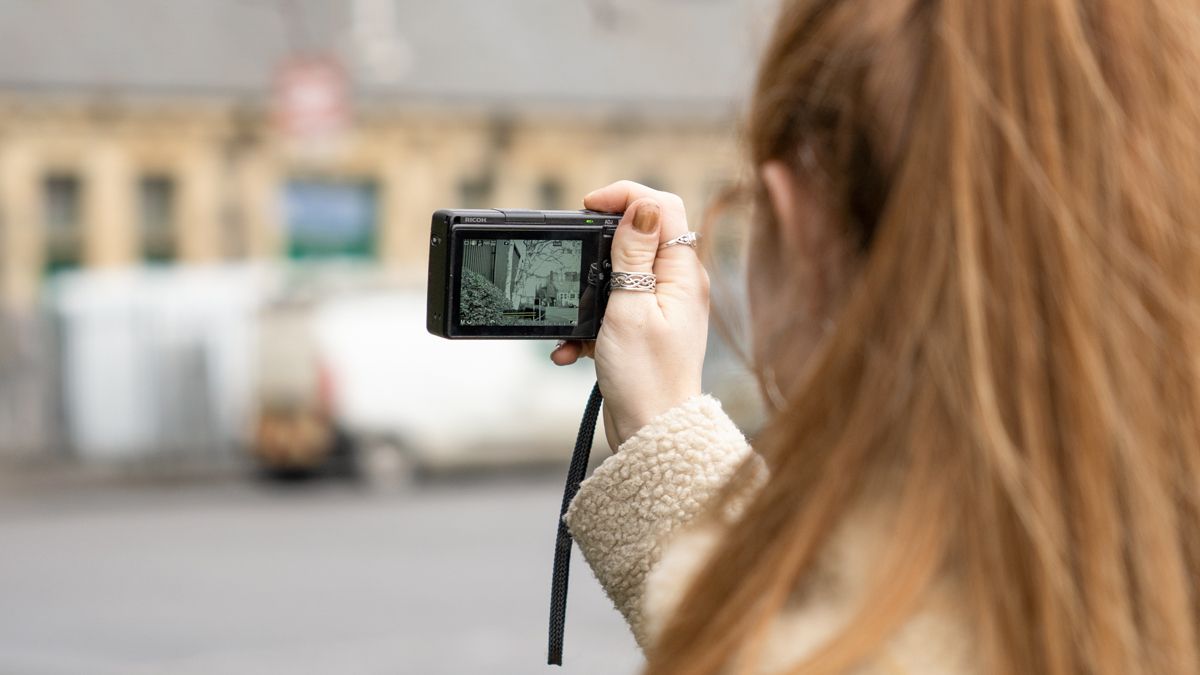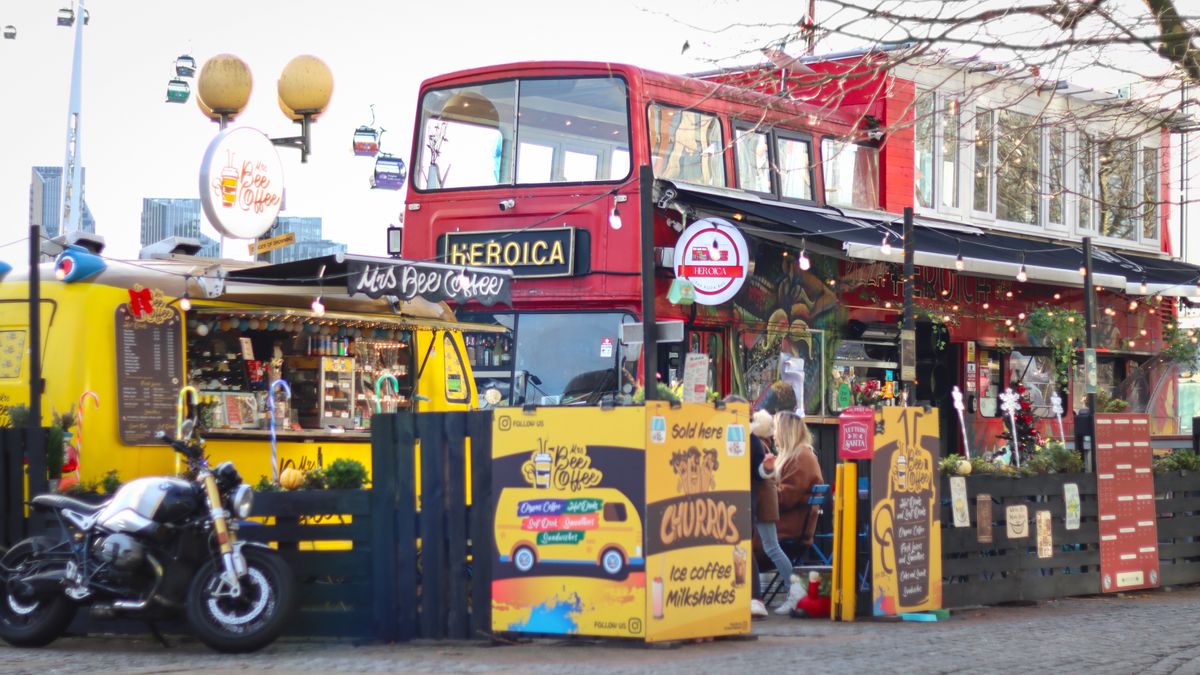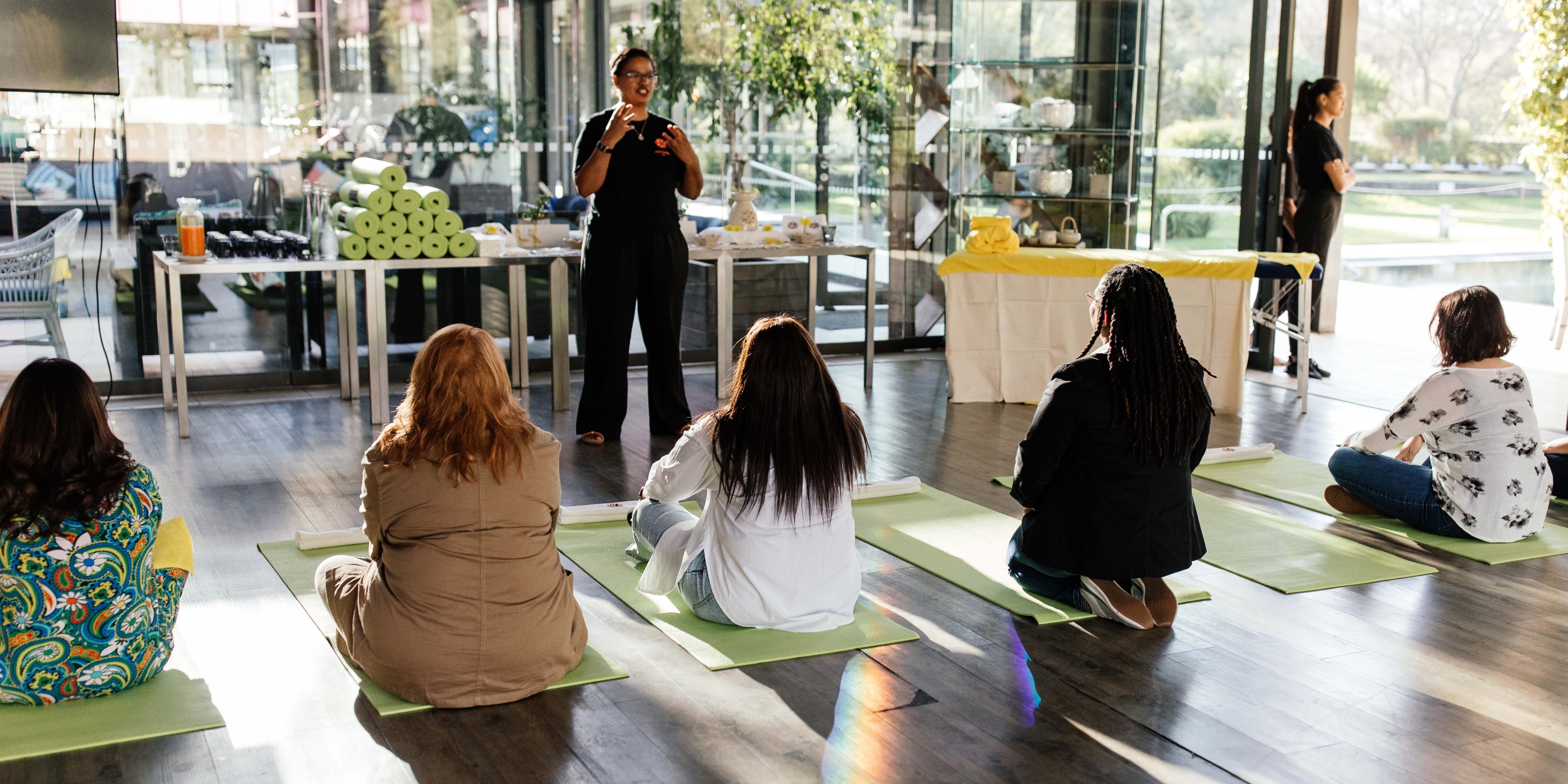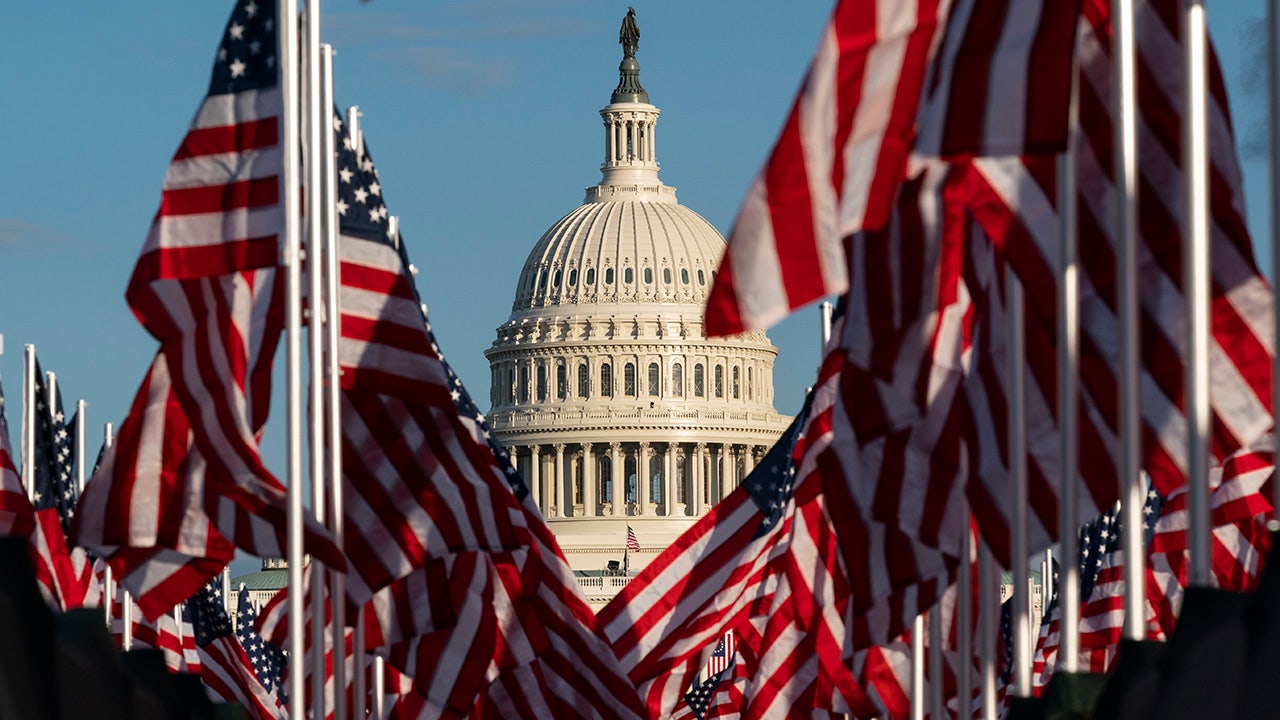Best travel camera for 2023: top choices for your adventures
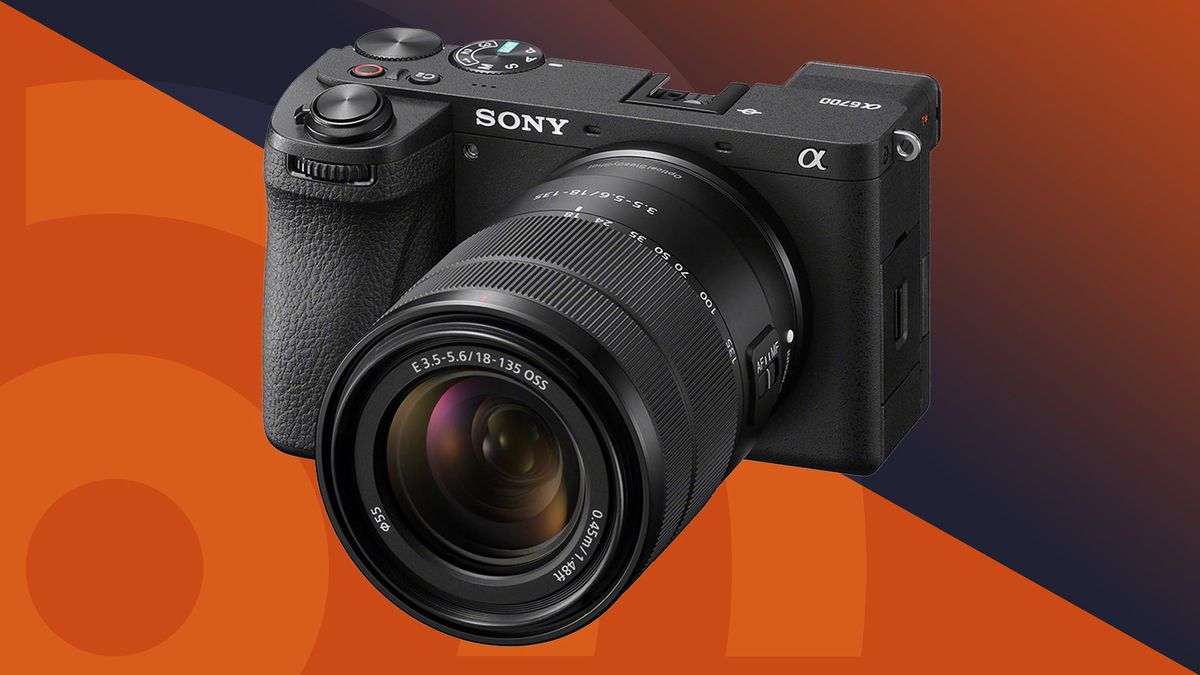
Weekend break or long-haul getaway, the best travel cameras will help you shoot stunning images of your adventures. From premium compacts to lightweight mirrorless models, we’ve tested the best travel cameras and ranked our favorites in the comprehensive list below. Wherever you’re heading, our expert guide is designed to help you find the ideal option for your skills and budget.
We think the best travel camera for most people right now is the OM System OM-5. It pairs smartphone-beating image quality with the flexibility of interchangeable lenses, and packs it all up in a shell that’s weatherproof and portable.
You’ll find a wide range of top travel cameras below, including some of the best mirrorless cameras. Our experts have spent countless hours testing the best options in real-world settings, taking them on the move to assess how convenient each one is to use, shoot and travel with. We’ve distilled the results to make your choice clearer, and included some useful buying advice to keep in mind when deciding.

Timothy Coleman
Tim is TechRadar’s Cameras editor, with over 15 years in the photo video industry and most of those in the world of tech journalism, Tim has developed a deeply technical knowledge and practical experience with all things camera related. He’s also worked in video production with clients including Canon, and volunteers his spare time to consult a non-profit, diverse stories team based in Nairobi.
The quick list
If you don’t have time to read our full list of the best travel cameras, you can read the round-up below for a shortcut to the top options for your needs and budget. If you find one that takes your fancy, use the links to jump to our full write-up.
The best travel camera overall
Squeezing a host of features into a compact, weatherproof body that’s compatible with a range of lenses, the OM-5 is the ideal travel camera.
Read more below
2. Panasonic Lumix ZS200 / TZ200
The best value travel camera
With a large 1-inch sensor and useful 15x optical zoom, the Panasonic TZ200 puts smartphone-beating performance in your pocket.
Read more below
The best-looking travel camera
Don’t be fooled by its lovely retro looks: the Nikon Z fc is every bit the modern travel camera, with a useful touchscreen and top image quality.
Read more below
The best action camera for travel
Small but powerful, the GoPro Hero 11 Black uses a new 8:9 aspect ratio to offer enhanced framing flexibility, ideal for sharing travel videos to social.
Read more below
The best tough travel camera
If your travels take you off the beaten track, the Olympus Tough TG-6 is an intuitive rugged camera that can deliver decent results in difficult situations.
Read more below
The best premium compact
With a fixed 23mm focal length and small form factor, the X100V is a powerful tool for street photography, producing detailed, realistic stills.
Read more below
Load the next 4 products…
The best small full-frame camera
Combining a small form factor with a high-res 61MP sensor and fantastic autofocus, the Sony A7C R is the best full-frame camera for travel photography.
Read more below
The best hybrid for travel vlogging
A capable sensor and automated settings, including a Vlogging mode, make the Fujifilm X-S20 an accessible tool for stills and video on the go.
Read more below
The best for moving subjects
The compact A6700 uses AI-powered autofocus to reliably snap on to animals, insects, cars and more. The Fuji X-S20 is better for video, though.
Read more below
10. Sony Cyber-shot RX100 IV
The best superzoom camera
Even with a 1-inch sensor, the Sony RX10 IV delivers sharp stills and video, with the added versatility of a generous 24-600mm zoom range.
Read more below
The best travel cameras in 2023
Why you can trust TechRadar
We spend hours testing every product or service we review, so you can be sure you’re buying the best. Find out more about how we test.
Below you’ll find full write-ups for each of the best travel cameras in our list. We’ve tested each one extensively, so you can be sure that our recommendations can be trusted.
The best travel camera overall
Buy it if:
✅ You want a robust travel camera: Light enough to travel with but tough enough to deal with bad weather, the OM-5 is a ruggedly dependable camera.
✅ You shoot handheld a lot: The OM-5 has excellent image stabilization for stills, meaning you can cross a tripod off your packing list.
Don’t buy it if:
❌ You want the best image quality: Its Micro Four Thirds sensor is decent enough, but some rivals offer more pixels and better low light performance.
❌ You have large hands: Handling is surprisingly good for a small camera, but the grip is not very deep, especially for those with bigger hands.
The OM-5 is only a relatively minor update of the Olympus OM-D E-M5 Mark III, but its combination of talents make it an ideal travel camera in our book – particularly if you want the flexibility of interchangeable lenses. It shoehorns a lot of features into a compact, weatherproof body that’s compatible with a wealth of equally small lenses. Most of its skills, including excellent in-body image stabilization and computational photography modes, are also designed with travelers and adventurers in mind.
Our testing found that, for its size, the OM-5 delivers excellent video and stills quality, which is bolstered by a stabilization system (good for 6.5-stops of compensation) that gives you a high hit-rate of keepers. We also enjoyed the high-quality feel of the camera’s dials and those in-camera software tricks, like Live ND and in-camera focus stacking, which are ideal for macro shots or blurring skies, surf and water for an ethereal effect. Less good are the fairly average EVF resolution, 4K/30p limit for video and relative limitations of its smaller sensor, but these are all acceptable trade-offs considering this camera’s size and price.
Read our in-depth OM System OM-5 review
The best-value travel camera
Buy it if:
✅ You want an all-in-one compact: You can’t beat the TZ200 for portability, but it’s also a feature-packed option with a useful zoom range and 1.0-inch sensor.
✅ You want a large zoom range: At 15x optical zoom, the TZ200 offers the versatility to shoot all sorts of subjects on your travels.
Don’t buy it if:
❌ You like an ergonomic grip: The Lumix TZ200 has plenty of manual controls on the metal body, but there’s not much of a grip to get your fingers around.
❌ You want a cheap camera: Its generous feature set makes the TZ200 excellent value, but its still pretty pricey for a premium compact.
With smartphones now raising the bar for point-and-shoot photography, compact cameras have to offer something special to justify their place in your travel bag. The ZS200 / TZ200 does that with its large 1-inch sensor and versatile 15x optical zoom. It might be towards the upper end of the ‘budget’ compact camera market, but Panasonic’s travel zoom continues to offer great value.
Its large 1in sensor produces better natural image quality than most smartphones, despite the latter’s advances in multi-frame processing. Our tests found colors to be nice and punchy, with the dynamic range allowing you to recover lost shadow detail with post-processing if needed. Even at 24mm, vignetting and distortion is nicely controlled. There’s also a handy built-in electronic viewfinder, which makes it easier to compose images in bright light. It’s still quite pricey, but this is still the best travel zoom compact camera available right now.
Read our in-depth Panasonic Lumix ZS200 / TZ200 review
The best-looking travel camera
Buy it if:
✅ You care about camera design: From the retro dials to the circular viewfinder, the Nikon Z fc channels classic style to fantastic effect.
✅ You like manual exposure control: Dedicated dials for ISO, shutter speed and exposure, complemented by a lens control ring, give excellent manual control.
Don’t buy it if:
❌ You need a wide choice of lenses: There are only a handful of Z-series kit lenses designed for the APS-C format, limiting your options for expansion.
❌ You want a rugged camera: Although it looks like the sturdy FM2, the Z fc isn’t weather-sealed, so it’s not one to take on rainy adventures.
Travel photography is all about capturing memories and Nikon’s Z fc fully embraces the concept of nostalgia: it’s a stunning homage to the 30-year-old Nikon FM2 – complete with retro styling, dimensions and dials. Despite the throwback design, it’s a very modern camera inside, sharing many of its specs with the capable Nikon Z50. While some photographers might wish for a full-frame sensor, the Z fc’s APS-C number does a stellar job of capturing stills and 4K video, aided by reliable tracking autofocus. Our tests found that its 20.9MP sensor had an excellent handle on noise, especially under ISO 800, while dynamic range was impressive.
Its vari-angle touchscreen is also a brilliant addition, making it easy to frame travel selfies – or folding away completely for a leather-back look that lets you pretend it’s the Eighties. The Nikon Z fc isn’t as sturdy as the camera that inspired it (there’s no weatherproofing, for example), but it’s still a beautifully unique camera for casual use. And with dedicated dials for ISO, shutter speed and exposure, plus a customizable lens ring, it’s also an easy one to control on the go.
Read our in-depth Nikon Z fc review
The best action camera for travel
Buy it if:
✅ You want a rugged travel camera: Waterproof down to 10m, the GoPro Hero 11 Black is a great choice for capturing action-packed travels.
✅ You plan to share on social: The 8:7 aspect ratio of its sensor gives you lots of flexibility to crop footage for social, including vertical videos.
Don’t buy it if:
❌ You plan to shoot in low light: Its 1/1.9in sensor shoots sharp footage, but it still struggles with noise handling in lower lighting conditions.
❌ You want a hybrid for stills: While the sensor can shoot 27MP stills, you’ll get a better photography experience from a standard alternative.
Thanks to a new 1/1.9in sensor with an 8:9 aspect ratio, we think the GoPro Hero 11 Black is the top action camera for travelers. Its max resolution of 5.3K/60p is the same as the Hero 10 Black, but the option to reframe footage for different social channels without sacrificing quality is a big deal if you like to share your adventures. So is the ability to capture dramatic TimeWarps at 5.3K, raw bursts at 30fps, and 24.7MP stills from 5.3K video.
Physically identical to the Hero 10 Black, the Hero 11 Black ships with the larger Enduro battery as standard, giving more time between recharges on the road. Its updated interface lets you tweak the user experience, with ‘Easy’ and ‘Pro’ modes to suit your skill level. It proved a polished tool in testing, wrapped up in familiarly robust housing. Improved Horizon Lock and HyperSmooth 5.0 smarts also do a remarkable job of stabilizing handheld video. Stills quality can’t compete with a proper camera, but the Hero 11 Black is still an impressively rugged, pocket-friendly choice for adventurous travelers.
Read our in-depth hands-on GoPro Hero 11 Black review
The best tough travel camera
Buy it if:
✅ You want a hardcore camera: With a case that’s waterproof, shockproof and freezeproof, the Olympus Tough TG-6 is built to take a beating.
✅ You like a simple interface: Premium features include RAW shooting and 4K video, but the camera itself is easy to operate, even in tricky conditions.
Don’t buy it if:
❌ You want the best image quality: Results from the 1/2.3in sensor are fine, but the TG-6 tends to overexpose, and detail is lost at the telephoto end.
❌ You like using a viewfinder: The Tough TG-6 doesn’t have a viewfinder, and the 3-inch LCD screen has limited visibility in bright sunlight.
Olympus arguably started the rugged compact camera trend with its Tough series, and the TG-6 doesn’t break the mould. Innovation might have slowed, but the Tough TG-6 is still one of the best travel cameras you can buy – and there’s no questioning its freeze-proof, shockproof and waterproof credentials.
Its industrial design felt reassuringly rugged in our tests, with (slightly fiddly) catch mechanisms that protect the ports. Large buttons make it convenient to operate beneath the waves, while the improved 3-inch LCD display also offers decent visibility in most conditions.
We found image quality to be reasonable for a camera with a 1/2.3-inch sensor, with nice, rich colors – although there was a tendency to overexpose and blow out highlights. An equivalent zoom range of 25-100mm is fair, plus the inclusion of 4K video and raw shooting enhance flexibility. It isn’t a major upgrade from the TG-5, but the Olympus TG-6 is nevertheless a stellar option for all-action travelers.
Read our in-depth Olympus TG-6 review
The best premium compact
Buy it if:
✅ You shoot in the street: With a fixed 23mm f/2 lens, snappy autofocus and compact build, the X100V is a fantastic choice for street photography.
✅ You want a premium camera: From its tilting touchscreen to its metal body, the X100V feels well-made and looks the business.
Don’t buy it if:
❌ You don’t want a fixed focal length: The 23mm lens is fantastic, but some users will find it limiting, especially if you value the ability to zoom.
❌ You’re on a tight budget: The X100V is a unique camera that feels premium, but its high price will put it out of budget for many.
A premium compact camera with a fixed 23mm f/2 lens and a design that’s been inspired by 1950s analogue cameras? Sounds like the very definition of niche. And yet, Fujifilm’s X100V is one of the best travel cameras you can buy – as long as you’re okay with that single focal length and no zoom.
For a start, it takes the X100F’s small form factor and adds a supremely useful tilting touchscreen. The advantages are support for touchscreen gestures and easier shooting at low or high angles.
Inside, a new 26.1MP sensor and X-Processor 4 combine to produce improved autofocus, image quality and high ISO performance. Our tests found that noise was well-controlled up to ISO 6400, while photos had bags of detail with realistic colors. Add in the option to shoot 4K/30p footage on the fly, as well as a higher resolution hybrid EVF, and you’ve got a properly capable pocket performer – provided you’re happy to pay a premium.
Read our in-depth Fujifilm X100V review
The best small full-frame camera
Buy it if:
✅ You want the sharpest stills: With a 61MP full-frame sensor, you won’t get sharper travel snaps from any other camera in this list.
✅ You want a small, powerful camera: Despite the full-frame sensor inside, the A7C R is very compact and fits neatly in the hand.
Don’t buy it if:
❌ You value good handling: The small design has drawbacks, including a compromised viewfinder and absent AF joystick.
❌ You plan to use big lenses: Its compact proportions mean the Sony A7C R is mismatched with larger telephoto lenses.
By combining a small, travel-friendly form factor with a 61MP full frame sensor and fantastic autofocus, Sony has created arguably the ultimate travel camera. Successor to the Sony A7C – already one of our favorite travel photography tools – and announced alongside the A7C II, the A7C R fits nicely in the hand, while a flip screen and new dials offer welcome control.
Equipped with Sony’s top-grade autofocus and AI-powered subject tracking, the A7C R can cleverly and reliably track a broad range of subjects. You won’t find a better full frame sensor, either: borrowed from the A7R V, it captures stunning, pin-sharp stills in all conditions. Cropping potential is vast, and video footage is decent too.
There are trade-offs, though. In testing, we found that the A7C R’s compact proportions come with handling compromises, especially compared to the traditional design of the A7R V. The viewfinder feels small and fiddly, and we wish Sony had included an AF joystick. It’s also not a camera to pair with large telephoto lenses. But the real kicker is the cost: it’s significantly more expensive than the A7C II. That premium means it’s only a camera to consider if you need absolutely the best possible image quality on your travels.
Read our in-depth Sony A7C R review
The best hybrid for travel vlogging
Buy it if:
✅ You value longevity: The X-S20 has double the battery life of the X-S10, making it a great choice for long days of travel photography.
✅ You shoot video, too: Capturing sharp 26MP stills and 6K/30p open gate video, the Fujifilm X-S20 is a true mirrorless hybrid.
Don’t buy it if:
❌ You need weather proofing: Build quality of the X-S20 is good, but you’re better off with the Sony A6700 if you need a weatherproof camera.
❌ You have a limited budget: Its additional features come at the cost of a steep price hike compared to the Fujifilm X-S10, which makes it a harder sell.
Channelling everything we liked about the X-S10 – including a compact, well-balanced body – the Fujifilm X-S20 cements its position as a fantastic mirrorless cameras for travel. It handles comfortably, with simplified dials making it accessible for beginners. In testing, we found new novice-friendly features – such as a dedicated Vlogging mode – also make the X-S20 a forgiving camera for touring first-timers.
The X-S20 is blessed with a proven shooting system, utilising the same 26.1MP sensor as the X-S10 and X-T4 to produce quality stills. It also eases the way for beginners with an automatic scene detection mode, which harnesses the power of Fuji’s latest X-Processor 5 to reliably choose the correct settings. From our first impressions, it works better than the automatic subject tracking, which was a little hit and miss.
With 6K/30p 4:2:2 10-bit internal video recording also on offer, plus in-body image stabilization that worked well in testing, the Fujifilm X-S20 is a solid option for content creators on the move. The lack of weather-sealing will discourage adventurous travellers, while the price tag means it isn’t one to leave in an unattended bag. But at just 26g heavier than its predecessor, the X-S20 is a very capable all-rounder for travel.
Read our in-depth Fujifilm X-S20 review
Best for moving subjects
Buy it if:
✅ You want a capable travel hybrid: A sharp APS-C sensor, five-axis stabilization and AI autofocus make the A6700 a great all-rounder to take on the road.
✅ You like to get hands-on: A more ergonomic grip and lots of direct-access buttons make the A6700 a nice camera to handle and use.
Don’t buy it if:
❌ You shoot mostly video: The A6700 can record sharp video, but there’s a heavy 1.6x crop on 4K/120p slow-mo and Active SteadyShot stabilization isn’t the best.
❌ You like simple menus: The interface on the A6700 has quite a learning curve, and it can be tricky to navigate when shooting out and about.
It’s a close-run thing between the Sony A6700 and the Fujifilm X-S20 above, but if you shoot a lot of moving subjects then the Sony should be your choice. Like the Fuji, it has a 26MP APS-C sensor and comes in a compact, travel-friendly form. And like the Fuji, it’s a genuine hybrid, offering decent video options to go with its stills prowess. But there are some key differences.
First, the good: the A6700 has the same AI-powered chipset as the far more expensive Sony A7R V, and this helps it deliver incredible subject tracking; seriously, this camera will lock on to humans, animals, insects, cars, trains, aircraft and more, then follow them unerringly around the frame. However, its video chops aren’t as impressive as those of the Fuji. 4K 120p slow-mo footage is subjected to a heavy 1.6x crop, while the five-axis stabilization doesn’t work as well when filming as it does when shooting stills. The complex menu system also leaves something to be desired.
Still, it handles well, has a great battery and would make an excellent all-rounder for your next trip – so long as you’re slightly more focused on images than video.
Read our in-depth Sony A6700 review
The best superzoom camera
Buy it if:
✅ You like to zoom in: With a sharp, fast 24-600mm, the RX100 IV offers fantastic versatility to capture a range of subjects on your travels.
✅ You want an all-in-one option: The RX100 IV is a high-end bridge camera with a big zoom range, high-quality EVF and capable AF system.
Don’t buy it if:
❌ You want a small camera: While it ticks most of the boxes for travel photography, the RX100 IV is bigger and heavier than many rivals.
❌ You like a slick touchscreen: Its tilting touchscreen is a useful addition, but you can’t use it to navigate menus or swipe through images.
In terms of offering something for everybody, the RX10 IV ticks a lot of boxes. It’s like having a bag full of lenses, but with the benefit of never having to change them. There’s a very long zoom (going all the way from 24-600mm), while the maximum aperture is pretty wide throughout the lens.
The RX10 IV’s sensor might not be as a large as the ones you’ll find on a mirrorless camera or DSLR, but Sony’s 20.1MP one-inch chip proved itself to be very capable in our tests. Noise was well-controlled, and you’d have no problem making an A3 print from one of its files (particularly if you shoot at under ISO 800).
You also get 24fps shooting, cracking 4K video quality and handling to rival a DSLR. The major downside? The high price – if your budget is tighter, don’t forget about this camera’s predecessor, the RX10 III.
Read our in-depth Sony Cyber-shot RX10 IV review
How to choose the best travel camera for you
How to choose
Picking the right travel camera can be trickier than finding affordable flights. You’ll want a shooting tool that’s compact enough to conveniently carry on your travels, yet still capable of capturing sharp stills and stable video of your jet-setting adventures.
There are a few key things to keep in mind when choosing your ideal travel camera. Among the most important is size. While pocketable compacts offer convenience, the quality of your travel snaps will be boosted by the bigger sensors of larger mirrorless models.
If your adventures are likely to involve going off the beaten track, it’s worth considering a travel camera with rugged credentials. This could be one of the best action cameras, such as the GoPro Hero 11 Black – perfect if you plan to shoot quick, slick travel clips. Or it could be a sturdy compact such as the Olympic TG-6, which is one of the best waterproof cameras.
It’s also worth thinking about what subjects you might be shooting on your trip. A long zoom range will be handy on safari, while something light and fast is better for capturing street snaps on a city break. Travel compacts, such as the Panasonic Lumix ZS200 / TZ200, usually use a zoom lens to cover a range of shooting scenarios. Interchangeable lens cameras like the Fujifilm X-T30 II can similarly offer the flexibility of both worlds, but only if you’re happy to travel with extra barrels in your backpack.
Which type of camera is best for traveling?
Travel cameras come in a range of shapes and sizes. Which style is best for you will depend on how you like to travel, what you like to shoot and how much gear you’re willing to cart around.
Travel zoom compacts such as the Panasonic Lumix ZS200 / TZ200 are pocket friendly, yet offer a broad scope for capturing a range of subjects. Thanks to generous zoom ranges, they give you the opportunity to get close to the action, or to shoot wide. The trade-off for having all of this flexibility in a compact body is generally a smaller sensor, which is less useful for shooting in low light.
If you’d like neat proportions but don’t need the versatility of a zoom lens, premium compact cameras could be worth considering. Models such as the Fujifilm X100V sacrifice zoom range in favour of larger sensors that are better at gathering light – usually a one-inch or, in the case of the X100V, an APS-C chip.
Between compacts and mirrorless cameras is where you’ll find bridge cameras. Bulkier than a standard compact, they offer more comfortable handling and a large zoom range, but without the need to carry different lenses. New bridge cameras are increasingly rare, but the Sony Cyber-shot RX10 IV remains a great example.
If you don’t mind traveling with multiple lenses, many of the best mirrorless cameras have been specifically designed with travel in mind. In the case of models like the OM System OM-5, that means a portable, weatherproof body, useful image stabilization for shooting on the move, plus a versatile Micro Four Thirds sensor that balances size and performance. And with lots of different lenses to choose from, you can pack different optics depending on the type of trip you’re taking – or opt for a reliable all-round option.
Is a DSLR or mirrorless camera better for travel photography?
When it comes to travel photography, most photographers look for a balance between portability and performance. If this is the combination you’re after, mirrorless cameras will almost aways have the edge over their DSLR rivals. Mirrorless models are generally smaller and lighter than DSLRs, making them easier to wield and travel with.
Despite their more compact proportions, many of the best mirrorless travel cameras can also match or outclass DSLR cameras when it comes to image quality, as well as autofocus abilities and video features. This makes them versatile tools for shooting on the move, especially if you choose a model with in-body image stabilization for sharp handheld results. If you pick a mirrorless camera with an established lens mount system, you’ll also find no shortage of glass to pack for your trip.
That said, there are reasons why you might still want to consider a DSLR camera for travel. Some photographers prefer the chunkier ergonomic grip for which the DSLR format is famous, especially if they plan on shooting for hours on end. The best DSLR cameras also offer superlative battery life, which can be useful if your travel plans include days away from electricity.
Budget might also be a factor, especially if you’re concerned about taking an expensive camera on your travels. Older DSLR cameras can offer great value, as can second-hand mirrorless models. It’s also worth looking at our round-up of the best cheap cameras, which includes some options that are a good fit for travel photography.
How we test travel cameras
Buying a camera these days is a big investment, and travel cameras are no different – so every camera in this guide has been tested extensively by us. For travel cameras in particular, real-world tests are the most revealing way to understand a camera’s performance and character, so we focus heavily on those, along with standardized tests for factors like ISO performance.
To start with, we look at the camera’s design, handling and controls to get a sense of how suitable it is for life on the road, and any particular features that might be particularly useful for globe-trotters. When we take it out on a shoot, we’ll use it both handheld and on a tripod to get a sense of where its strengths lie, and test its startup speed.
When it comes to performance, we use a formatted SD card and shoot in both raw and JPEG (if available). For burst shooting tests, we dial in our regular test settings (1/250 sec, ISO 200, continuous AF) and shoot a series of frames in front of a stopwatch to see if it lives up to its claimed speeds. We’ll also look at how quickly the buffers clears and repeat the test for both raw and JPEG files.
In various lighting conditions, we also test the camera’s different autofocus modes (including Face and Eye AF) in single point, area and continuous modes. We also shoot a range of photos of different styles (portrait, landscape, low light, macro/close-up) in raw and JPEG to get a sense of metering and its sensor’s ability to handle noise and resolve fine detail.
If the camera’s raw files are supported by Adobe Camera Raw, we’ll also process some test images to see how we can push areas like shadow recovery. And we’ll also test its ISO performance across the whole range to get a sense of the levels we’d be happy to push the camera to.
Battery life is tested in a real-world fashion, as we use the camera over the course of the day with the screen set to the default settings. Once the battery has reached zero, we’ll then count the number of shots to see how it compares to the camera’s CIPA rating. Finally, we test the camera’s video skills by shooting some test footage at different frame-rates and resolutions, along with its companion app.
We then take everything we’ve learned about the camera and factor in its price to get a sense of the value-for-money it offers, before reaching our final verdict.
link

